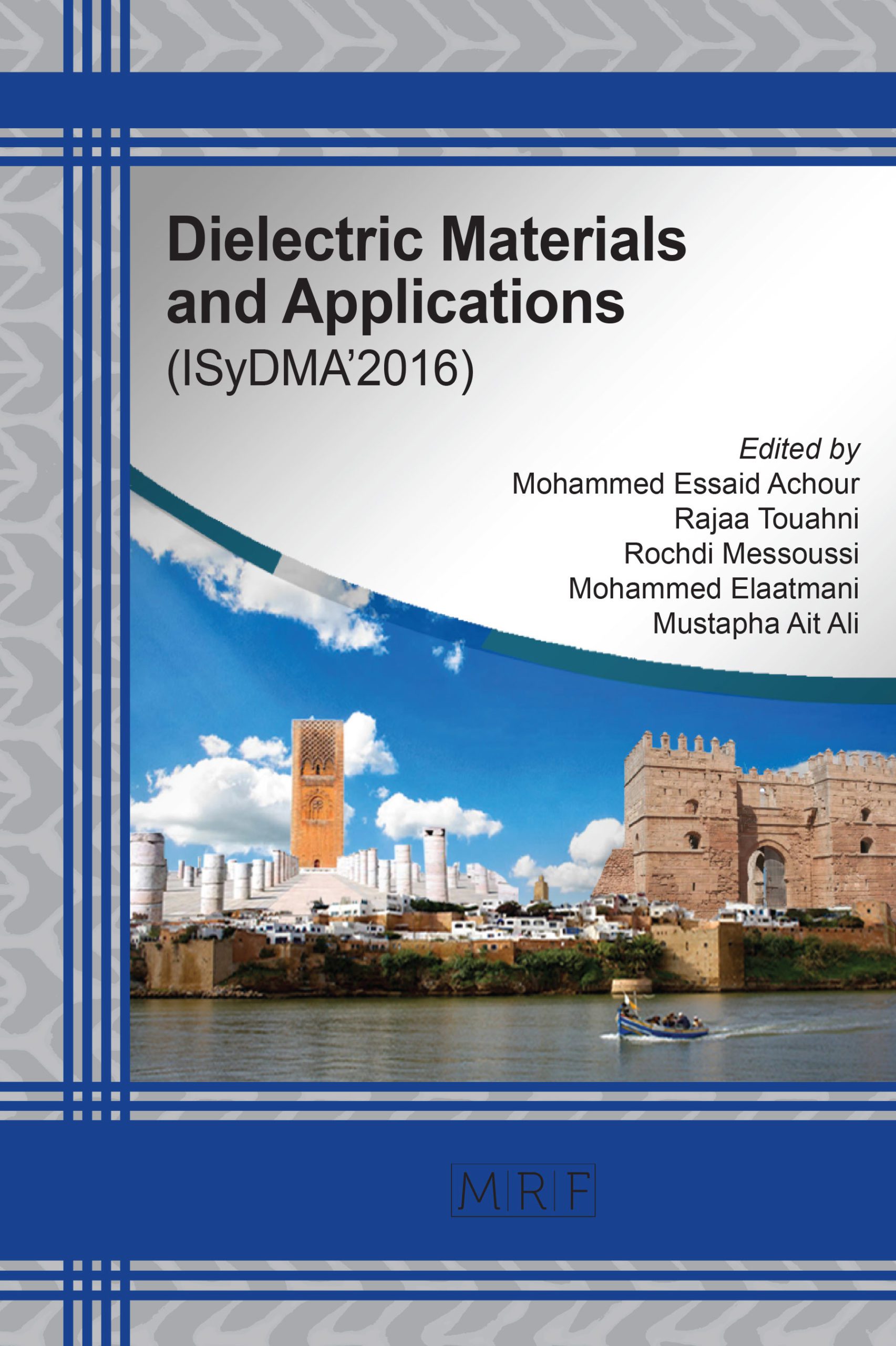S. BOULMELH, L. SACI, F. MANSOUR, R. MAHAMADI
Abstract. Undoped Zinc oxide (ZnO) thin films were de-posited onto microscope glass substrates in the temperature range of 300 °C – 450 °C using spray pyrolysis technique. The study of the composition and structural properties of these films were investigated by means X-ray diffraction and Raman spectroscopy versus the increasing substrate temperature (Ts). The XRD results presented that the films prepared at a substrate temperature greater than 300 °C exhibit the hexagonal wurtzite with a preferential orientation along the (100) direction. Furthermore, the lattice parameters showed that the presence of low micro-stresses and the crystallinity of all samples were improved with thermal annealing. The Raman spectroscopy results showed, the presence of the E2low, E2high located around 98 cm-1 and 437.5 cm-1 respectively, and the deconvolution of the band located between 520cm-1 and 620cm-1 were formed of an E1(LO), A1(LO) located about 581cm-1 and 551cm-1 , these phonons modes were interpreted by ZnO wurtzite phase. In addition, the shift of the position of E1 (LO), A1 (LO) peaks indicates the presence of micro-stress in the deposited layers. The results obtained are in good agreement with those found by XRD. Finally, the obtained results showed that the deposited films can be used as components in micro technology to know biosensors.
Keywords
Spray Pyrolysis, Undoped ZnO, XRD, Raman, Substrate Temperature
Published online 12/10/2016, 4 pages
Copyright © 2016 by the author(s)
Published under license by Materials Research Forum LLC., Millersville PA, USA
Citation: S. BOULMELH, L. SACI, F. MANSOUR, R. MAHAMADI, ‘Structural and composition properties of ZnO thin films elaborated by spray pyrolysis’, Materials Research Proceedings, Vol. 1, pp 104-107, 2016
DOI: http://dx.doi.org/10.21741/9781945291197-26
The article was published as article 26 of the book Dielectric Materials and Applications
References
[1] GC. R. Gorla, N. W. Emanetoglu, S. Liang, W. E. Mayo, and Y. Lu, “Structural, optical, and surface acoustic wave properties of epitaxial ZnO films grown on (0112) sapphire by metalorganic chemical vapor deposition,” Journal of Applied Physics, vol. 85, no. 5, p. 2595, March.1999.
[2] A. Belaidi, T. Dittrich, D. Kieven, J. Tornow, K. Schwarzburg, M. Kunst, N. Allsop, M. C. Lux-Steiner, and S. Gavrilov, “ZnO-nanorod arrays for solar cells with extremely thin sulfidic absorber,” Journal of Solar Energy Materials and Solar Cells, vol. 93, no. 67, pp. 1033–1036, 2009. http://dx.doi.org/10.1016/j.solmat.2008.11.035
[3] N. Jabena Begum, K. Ravichandran, “Effect of source material on the transparent conducting properties of sprayed ZnO: Al thin films for solar cell applications,” Journal of Physics and Chemistry of Solids, vol. 74, pp. 841–848, 2013. http://dx.doi.org/10.1016/j.jpcs.2013.01.029
[4] Chien-Yuan Lu, Sheng-Po Chang,Shoou-Jinn Chang and I-Cherng Chen. “ZnO Nanowire-Based Oxygen Gas Sensor” IEEE Sensors Journal, vol. 9(4), pp.485 – 489, 2009. http://dx.doi.org/10.1109/JSEN.2009.2014425
[5] A. Ismail, M.J. Abdullah, “The structural and optical properties of ZnO thin films prepared at different RF sputtering power”Journal of King Saud University – Science, Vol 25, pp.209–215, 2013.
[6] Pai-Chun Chang, Zhiyong Fan, Dawei Wang, Wei-Yu Tseng, Wen-An Chiou, Juan Hong, and Jia G. Lu, “ZnO Nanowires Synthesized by Vapor Trapping CVD Method”Chemistry Materials. Vol.16, pp.5133-5137, 2004. http://dx.doi.org/10.1021/cm049182c
[7] Chien-Yie Tsay , Hua-Chi Cheng , Yen-Ting Tung, Wei-Hsing Tuan , Chung-Kwei Lin., “Effect of Sn-doped on microstructural and optical properties of ZnO thin films deposited by sol–gel method,” Thin Solid Films .vo. l517, pp. 1032–1036, 2008.
[8] N. Jabena Begum, R. Mohan, K. Ravichandran, “Effect of solvent volume on the physical properties of aluminium doped nanocrystalline zinc oxide thin films deposited using a simplified spray pyrolysis technique,” Superlattices and Microstructures, vol. 53, pp. 89-98, 2013. http://dx.doi.org/10.1016/j.spmi.2012.09.012
[9] C. H. Lee and L. Y. Lin, “Characteristics of spray pyrolytic ZnO thin films,” Applied Surface Science, vol. 92, pp. 163–166, 1996. http://dx.doi.org/10.1016/0169-4332(95)00223-5
[10] B. J. Lokhande, P. S. Patil, and M. D. Uplane, “Deposition of highly oriented ZnO films by spray pyrolysis and their structural, optical and electrical characterization,” Materials Letters, vol. 57, no. 3, pp. 573– 579, 2002. http://dx.doi.org/10.1016/S0167-577X(02)00832-7
[11] A. L. Patterson, “The Scherrer Formula for X-Ray Particle Size Determination,” Physical Review, vol. 56, no. 10, pp. 978–982, Nov. 1939. http://dx.doi.org/10.1103/PhysRev.56.978
[12] R. Ayouchi, F. Martin, D. Leinen, and J. R. Ramos-Barrado, “Growth of pure ZnO thin films prepared by chemical spray pyrolysis on silicon,” Journal of Crystal Growth, vol. 247, no. 3, pp. 497–504, 2003. http://dx.doi.org/10.1016/S0022-0248(02)01917-6
[13] X. Q. Wei, B. Y. Man, M. Liu, C. S. Xue, H. Z. Zhuang, and C. Yang, “Blue luminescent centers and microstructural evaluation by XPS and Raman in ZnO thin films annealed in vacuum, N2 and O2,” Physica B: Condensed Matter, vol. 388, no. 12, pp. 145–152, Jan. 2007. http://dx.doi.org/10.1016/j.physb.2006.05.346
[14] N. Ashkenov, B. N. Mbenkum, C. Bundesmann, V. Riede, M. Lorenz, D. Spemann, E. M. Kaidashev, A. Kasic, M. Schubert, M. Grundmann, G. Wagner, H. Neumann, V. Darakchieva, H. Arwin, and B. Monemar, “Infrared dielectric functions and phonon modes of high-quality ZnO films,” Journal of Applied Physics, vol. 93, no. 1, pp. 126–133, Jan. 2003. http://dx.doi.org/10.1063/1.1526935
[15] B. Cao, W. Cai, H. Zeng, and G. Duan, “Morphology evolution and photoluminescence properties of ZnO films electrochemically deposited on conductive glass substrates,” Journal of Applied Physics, vol. 99, no. 7, p. 073516, Apr. 2006. http://dx.doi.org/10.1063/1.2188132

































